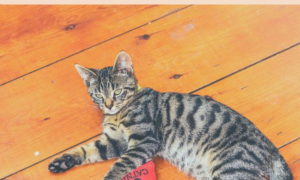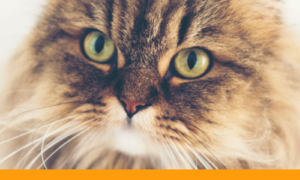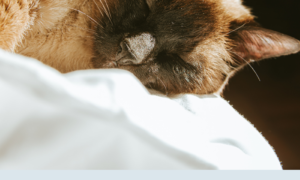By Elizabeth Parker for The Daily Cat

Gretchen von Grossmann was stunned when her vet told her that it would cost $3,000 to treat her 8-year-old tabby, Bob, for a serious infection. “I stepped outside the office and cried,” she says. “Then I went back in and told them I had to put him down.”
Luckily that didn’t happen, since von Grossman and her veterinarian discussed other options and agreed on a more affordable treatment. But for many pet owners, the cost of care does lead to that desperate outcome. An often-overlooked solution is pet health insurance. Knowing that they will never have to put their kitties down for lack of money to pay for veterinary fees offers cat owners peace of mind.
Why cats are good candidates
Pet insurance is less common among cat owners than dog owners, even though kitties are perfect candidates for it. Why? Maybe because it’s easy to think a young, healthy or indoor cat doesn’t really need it — or that an older cat may not even qualify for it. In all of these cases, however, insurance can be life- and money-saving.
“Cats will hide their illness or injuries,” says Jack Stephens, DVM, who founded the Boise, Idaho, insurance company called Pets Best Insurance. “It’s their wild nature to hide when they’re vulnerable, for protection.” Because of this, a pet owner may not realize a cat is ill until a disease has progressed to a point where treatment is expensive. “Cancer is the main reason for euthanasia of cats,” says Stephens. “We’re working to make sure pet owners don’t have to do this.”
Younger cats, and indoor cats of any age, can also get into household mischief that leads to accidents or ingestion of nonfood items. When James Helmer’s cat, Mittens, began limping around the house, he immediately took him to the vet and learned that Mittens had a torn ACL (a ligament in the leg). Surgery and testing came to $1,800, but Helmer’s pet insurance — Veterinary Pet Insurance Company (VPI) in Brea, Calif. — reimbursed him $1,400. “If it wasn’t for VPI, we probably would have put him down,” Helmer says.
What to look for
A lot of pet owners don’t even think about insurance until their pets become seriously ill, and by that time, it’s usually impossible to get coverage. So, do your feline family member a favor, and look into the costs and benefits of pet insurance well before a crisis. Here are some questions to ask when looking for a reliable insurance company that will fit your needs:
- Does the company offer coverage for routine health care? Often, different levels of programs are available, one of which may cover basic care, sometimes referred to as “well-cat care.”
- Does the company spell out what it does not cover and explain all fees? A schedule of benefits and any extra fees should be clear to you.
- How long has the company or its executives been in this business? Look for stability, as well as experience with veterinarians.
- Does the company require you to visit only certain veterinarians? If this is the case, check to see if your veterinarian is on the list of accepted doctors.
Insurance makes even more sense if you have more than one cat, because of the eventual costs of care they may rack up. “The earlier you can get your cat enrolled, the better,” says Brian Iannessa of VPI, which currently insures over 400,000 pets. “The longer you wait, the greater the chance that an illness or injury will occur.” Also, be clear about what is not covered. For instance, some insurance companies do not cover diseases that are preventable by vaccines, orthodontics or treatment for parasites.
How it works
Once you enroll your pet or pets, you will be charged a monthly premium. You can get an estimate on premiums at many pet insurance Web sites. When you take your cat to the doctor, you will need to later submit a claim for the cost, and the insurance company will then reimburse you the full amount, or a high percentage of the fees.
“Pet insurance is a form of risk management,” says Iannessa. “It’s there to protect you and your pet against the unexpected.” It can give you the confidence of knowing you’re doing everything you can to provide your kitty with a long and healthy life.
Photo: Corbis Images
Elizabeth Parker has written for The Boston Globe, Shape, Glamour, Viv and many other publications. She is co-author of Heeling Your Inner Dog: A Self-Whelp Book (Times Books) and currently lives in Los Angeles with her husband, son, cat and two rabbits.





